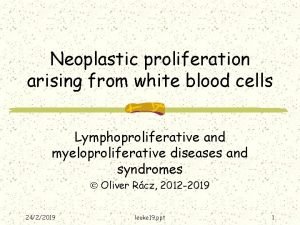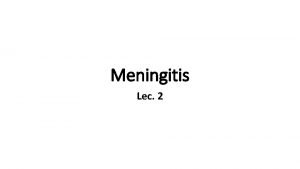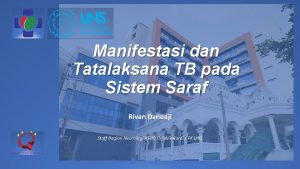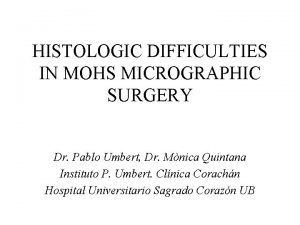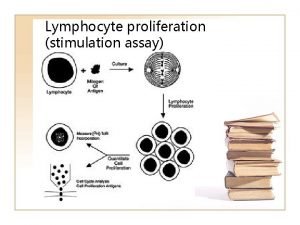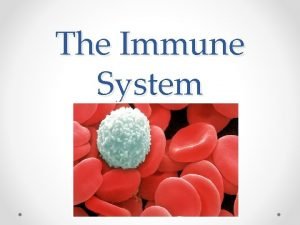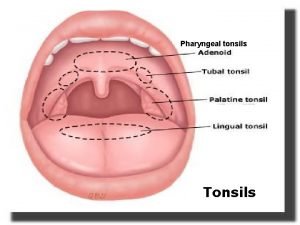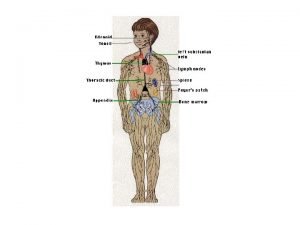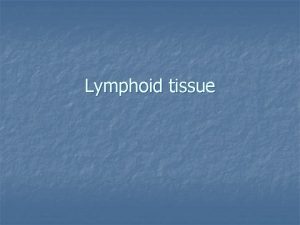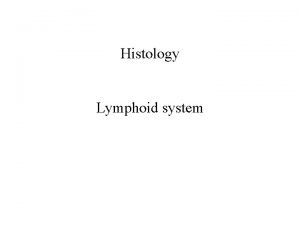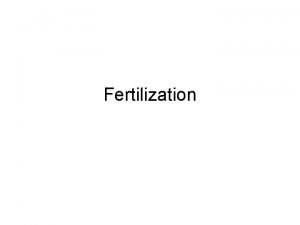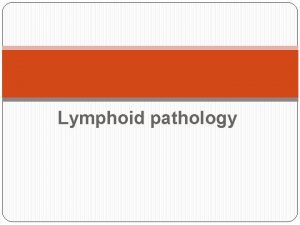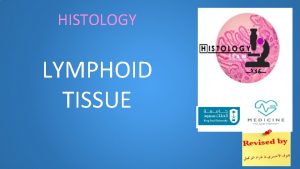LYMPHOID ORGNS Function maturation differentiation proliferation Primary central














- Slides: 14

LYMPHOID ORGNS Function - maturation - differentiation - proliferation Primary (central) L. O. T and B startto express Ag - specific receptors Secondary (peripheral) L. O. Ly proliferation and differentiation after interaction with Ag

Primary (central) L. O. 1) Thymus 2) Bone marrow

Thymus 1 Morphology: lobular organ cortex medulla Function: maturation of T cells (only 1 x 106 of 5 x 107 tymocytov mature) Maturation: 3 STEPS: 1) Migration and proliferation 2) Differentiation 3) Selection

1) Migration and proliferation Thymocytes react with epithelial cells (cortex), dendritic cells and Mph (medulla) 2) Differentiation 1) step - 3 negat. thymocytes (CD 3 -, CD 4 -, CD 8 -) markers CD 44+, CD 25+, CD 117+ TCR genes not rearranged 2) step - differentiation - TCR TCR γ markers CD 44 -, CD 25+, CD 117+ 3) thymocytes TCR γ T Ly (CD 3+, CD 4 -, CD 8 -) 5% of matured T cells thymocytes TCR Th (CD 3+, CD 4+, CD 8 -) Tc (CD 3+, CD 4 -, CD 8+)

THYMUS 2 POSITIVE SELECTION Only thymocytes with affinity to „self“-MHC + Ag survive AIM: Elimination of nonfunctional T cells MHC + epitop-Ag TCR/CD 3

THYMUS 3 NEGATIVE SELECTION Thymocytes with high affinity to MHC + self Ag are eliminated - clonal deletion or inactivated – clonal anergy AIM: Elimination of AUTOREACTIVE T cells

Secondary lymphoid organs Functions 1. Trapping and concntration of Ag 2. Production of Ab and Ag specific T cells Secondary lymphoid organs: 1. Spleen - blood born microbs and Ag 2. Lymph nodes - lymphatic pathway > skin, mucosa 3. Mucosa associated lymphatic tissue (MALT) – lining of mucosa surface Ag invading mucosa

SPLEEN Function - Ab synthesis and releasing to circulation - hemokaterhesis / Tr a Er ( Structure: red pulp white pulp

SLEZINA Red pulp plazma cells, Ma, Er, Tr, PMNL and Ly. White pulp - (Peri. Arteriolar Lymphoid Sheath - PALS). T cells round central arteria B cells in primary folicules ( non stimulated) secondary folicules (Ag stimulated) germinal centre / memory cells B Ly represent 50% spleen cells, 30 -40% - T Ly.

Lymph node (LN) Structure - cortx - medulla Cortex Primary folicules – non activated B cells Secondary folicules - response to Ag - Activated B cels – differentiation to plasma cells - Th support B cell differentiation - dendritic cells – Ag presentation - FDC - activation of memory cells - Mph Interfolicular space and in paracortex – T cells (mainly Th) Medulla Ly, high number of Mph and dendritic cells

Lymph node (LN) Ag enters LN and trapped by Mph and dendritic cells Degradation of Ag. Fragments (epitopes) are expressed on the surface of APC cells together with MHC molecules Activation of T cells The first mitotic wave in T zones is recorded 1 -2 days after contact with Ag prolif. of B Ly, germinal centrers

Immune system of mucosa - MALT >50% of lymphoid tissue - (GALT) gut-associated lymphoid tissues - (BALT) bronchus-associated lymphoid tissue -(GUALT) genitourinary-associated lymphoid tissue Exmples of MALT: tonsiles, appendix, Peyer`s patches, etc. …

Mucosa associated lymphatic tissue - MALT Structure of MALT 1. Organized MALT (o-MALT) – immune cells in epithelial layer of mucosa and under epithelium Induction of immune reaction 2. Diffuse MALT (d-MALT) – various types of lymphoid cells (B and T Ly, Ma, Ne, Eo, Ma) in lamina propria Effector phase of immune reactions

Organized MALT (o- MALT) Peyer`s patches : 1. Lymphoid folicules (> 100) central part - B Ly, FDC, Ma peripheral part - T Ly 2. Epithelium - „M“ cells – transport of Ag - intra epithelia T Ly – 80% belong to CD 8+ (regulatory function)
 Bursa equivalent organs
Bursa equivalent organs Hodgkin's lymphoma
Hodgkin's lymphoma Intimal proliferation
Intimal proliferation Intimal proliferation
Intimal proliferation Proliferation advertising
Proliferation advertising Proliferation of interest groups
Proliferation of interest groups Uncontrolled clonal proliferation
Uncontrolled clonal proliferation Industrial proliferation
Industrial proliferation Folliculocentric basaloid proliferation
Folliculocentric basaloid proliferation Fibrous proliferation
Fibrous proliferation Lymphocyte proliferation
Lymphocyte proliferation Cause of splenomegaly in malaria
Cause of splenomegaly in malaria Largest lymphoid organ
Largest lymphoid organ Tubal tonsils
Tubal tonsils Lymphoid tissue in large intestine
Lymphoid tissue in large intestine

